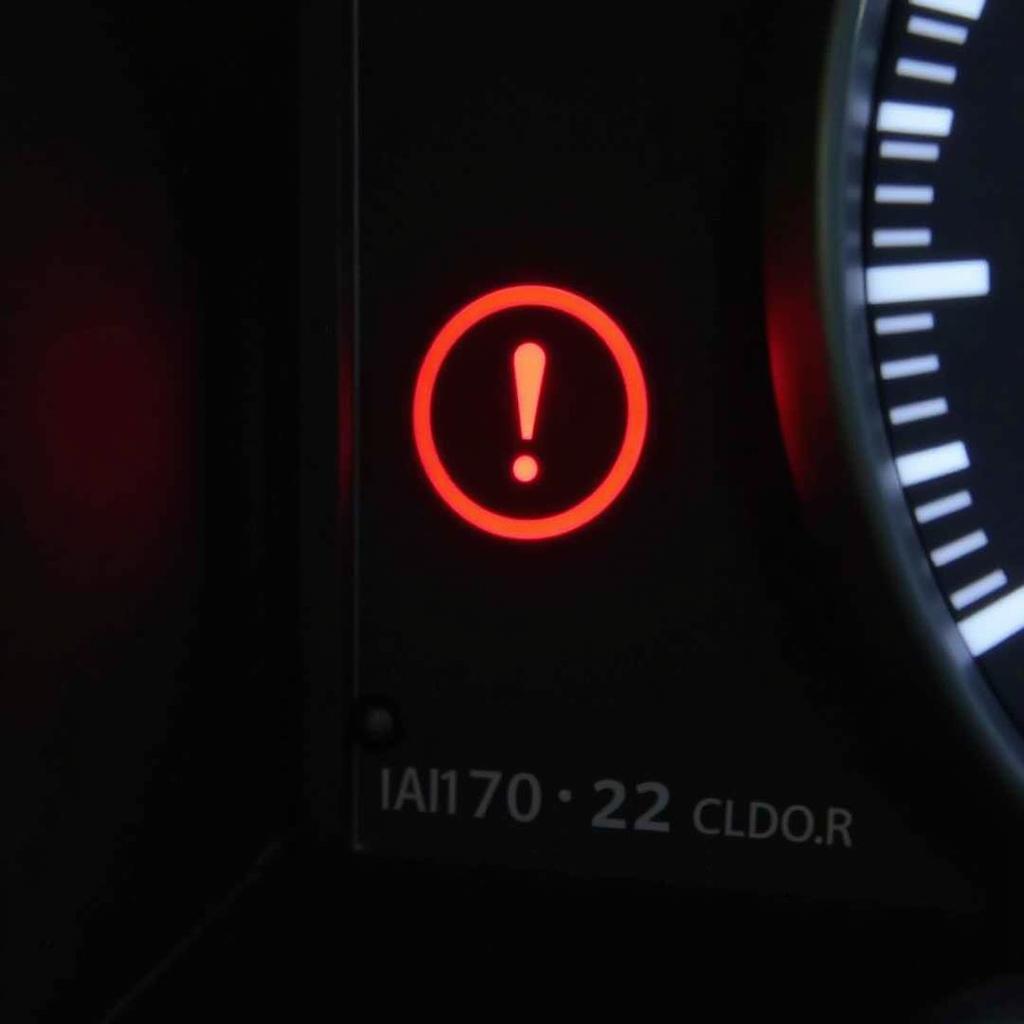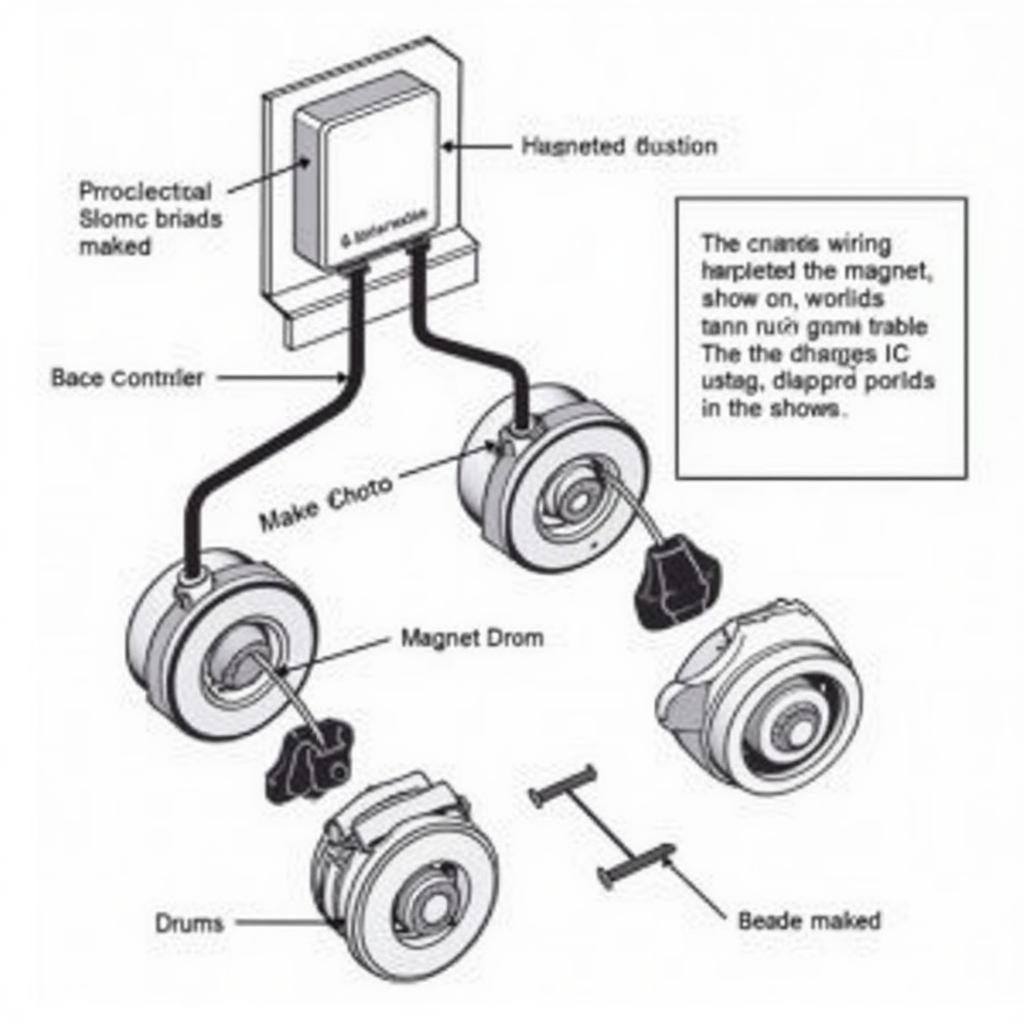The Ford Fiesta brake fluid warning light is a crucial safety feature that alerts drivers of a potential issue with their braking system. If this light illuminates on your dashboard, it signifies a drop in brake fluid level, which could lead to reduced braking performance and even brake failure. This comprehensive guide delves into the common causes, troubleshooting tips, and potential solutions for a Ford Fiesta brake fluid warning light.
Understanding Your Ford Fiesta Brake Fluid Warning Light
 Ford Fiesta Dashboard with Brake Fluid Warning Light
Ford Fiesta Dashboard with Brake Fluid Warning Light
Your car’s braking system operates on hydraulic pressure, which relies on brake fluid to transmit force from the brake pedal to the wheels. The brake fluid warning light is designed to activate when this pressure is compromised due to low fluid levels. Ignoring this warning light can have serious consequences, potentially compromising your ability to brake effectively.
Common Causes of a Ford Fiesta Brake Fluid Warning Light
There are several reasons why your Ford Fiesta’s brake fluid warning light may be on:
- Brake Fluid Leak: A leak in the brake lines, hoses, calipers, or wheel cylinders is a common culprit behind low brake fluid levels. Inspect all components for signs of leakage, such as wet spots or dripping fluid.
- Worn Brake Pads: While not a direct cause of brake fluid loss, significantly worn brake pads can trigger the warning light. As the pads wear down, the brake calipers need to extend further to engage the rotors, requiring more brake fluid and potentially triggering the sensor.
- Faulty Brake Master Cylinder: The brake master cylinder is responsible for distributing brake fluid throughout the system. If the master cylinder develops a leak or internal seal failure, it can lead to fluid loss and illuminate the warning light.
- Worn Brake Caliper Seals: The brake calipers house pistons that push the brake pads. Over time, the seals on these pistons can wear out, allowing brake fluid to leak.
Troubleshooting a Ford Fiesta Brake Fluid Warning Light
Before you start troubleshooting, it’s crucial to prioritize safety:
- Do not drive your vehicle if you suspect a brake fluid leak or if the brake pedal feels spongy or unresponsive.
- Park your car on a level surface and engage the parking brake.
Here are some steps you can take:
- Check the Brake Fluid Level: This may seem obvious, but it’s the first thing you should do. Locate the brake fluid reservoir under the hood (refer to your owner’s manual for its exact location). The reservoir will have a “Min” and “Max” marking. If the fluid level is below the “Min” mark, you’ll need to add more.
- Inspect for Leaks: Carefully examine the brake lines, hoses, calipers, and wheel cylinders for any signs of leaks. Look for wet spots, drips, or puddles of brake fluid. If you find a leak, it’s best to have a professional mechanic repair it.
- Check the Brake Pads: Inspect your brake pads for wear and tear. If they are significantly worn, it’s time to have them replaced.
When to Seek Professional Help
While adding brake fluid might seem like a simple fix, it’s important to remember that the underlying cause of the low fluid level needs to be addressed. If you’re uncomfortable performing any of the troubleshooting steps yourself, or if you suspect a more serious issue, it’s best to err on the side of caution and consult a qualified mechanic.
Expert Insights
“Many car owners underestimate the importance of regular brake fluid flushes,” says John Smith, a certified automotive technician with over 20 years of experience. “Brake fluid is hygroscopic, meaning it absorbs moisture over time, which can reduce its effectiveness and even lead to corrosion within the braking system. It’s generally recommended to have your brake fluid flushed every 2 years or as recommended by your car manufacturer.”
Preventing Future Brake Fluid Warning Lights
- Adhere to your Ford Fiesta’s recommended maintenance schedule: Regular brake inspections can help identify potential issues early on.
- Pay attention to any changes in your brake pedal feel: If the pedal feels spongy, goes to the floor, or requires more pressure than usual, it’s crucial to have your brakes checked immediately.
- Don’t ignore the warning lights: Addressing warning lights promptly can prevent minor issues from escalating into major problems.
Conclusion
The brake fluid warning light in your Ford Fiesta is a critical safety indicator that should never be ignored. While a simple top-up of brake fluid might offer a temporary solution, it’s essential to identify and address the underlying cause of the low fluid level. By understanding the potential causes and taking proactive steps, you can help ensure the optimal performance and safety of your vehicle’s braking system.

